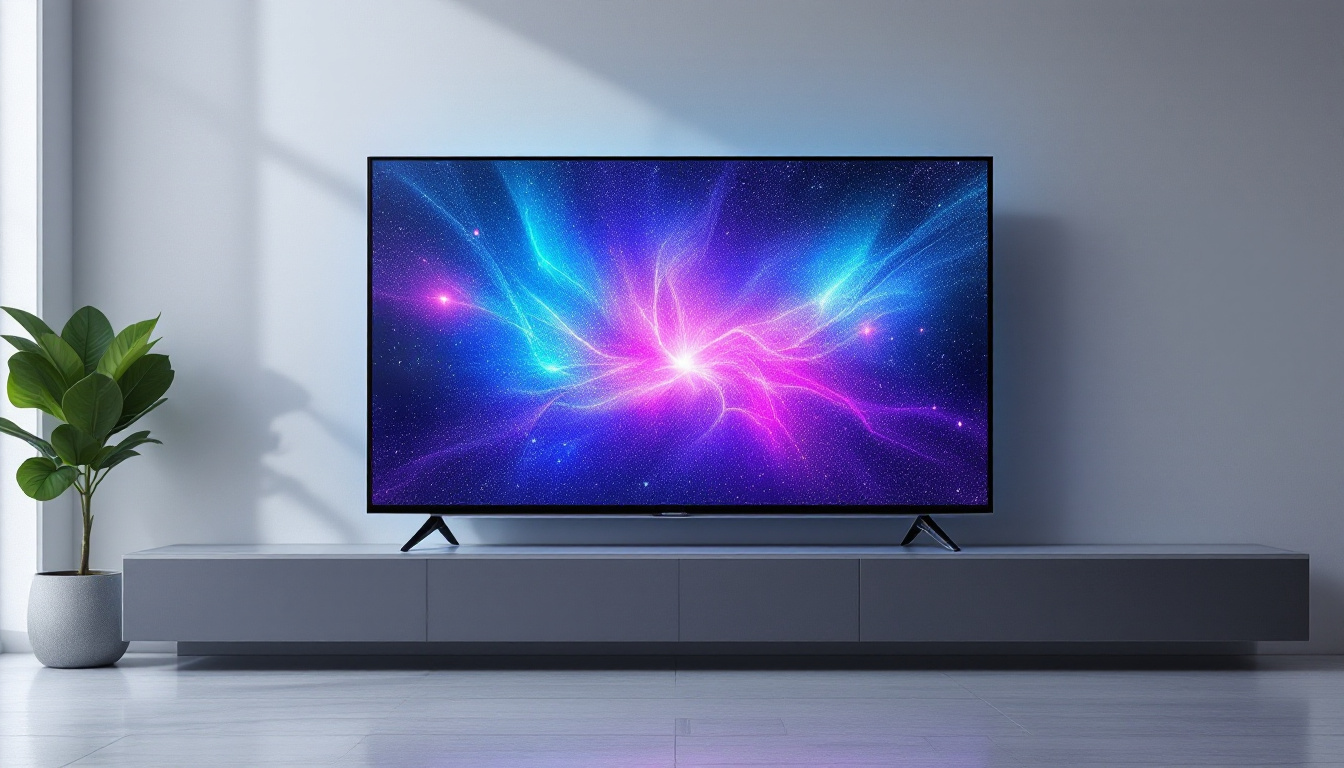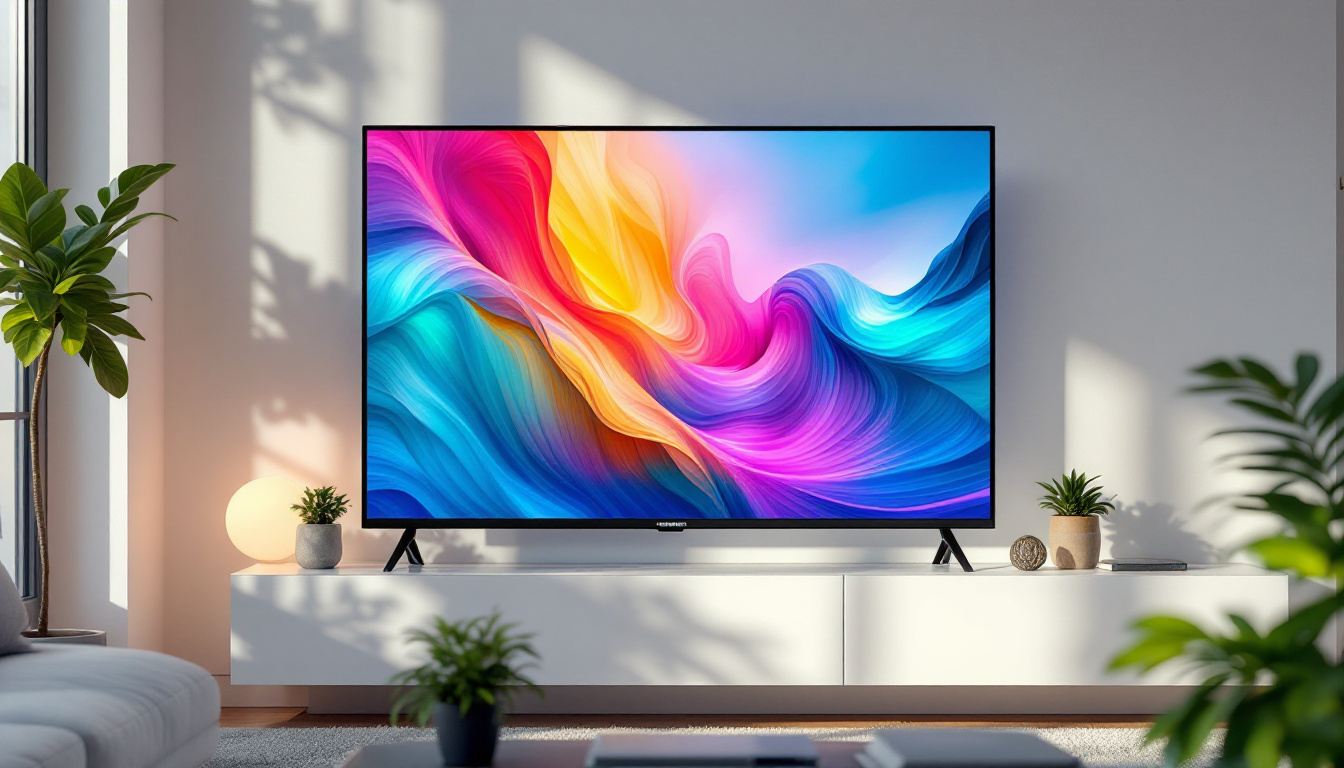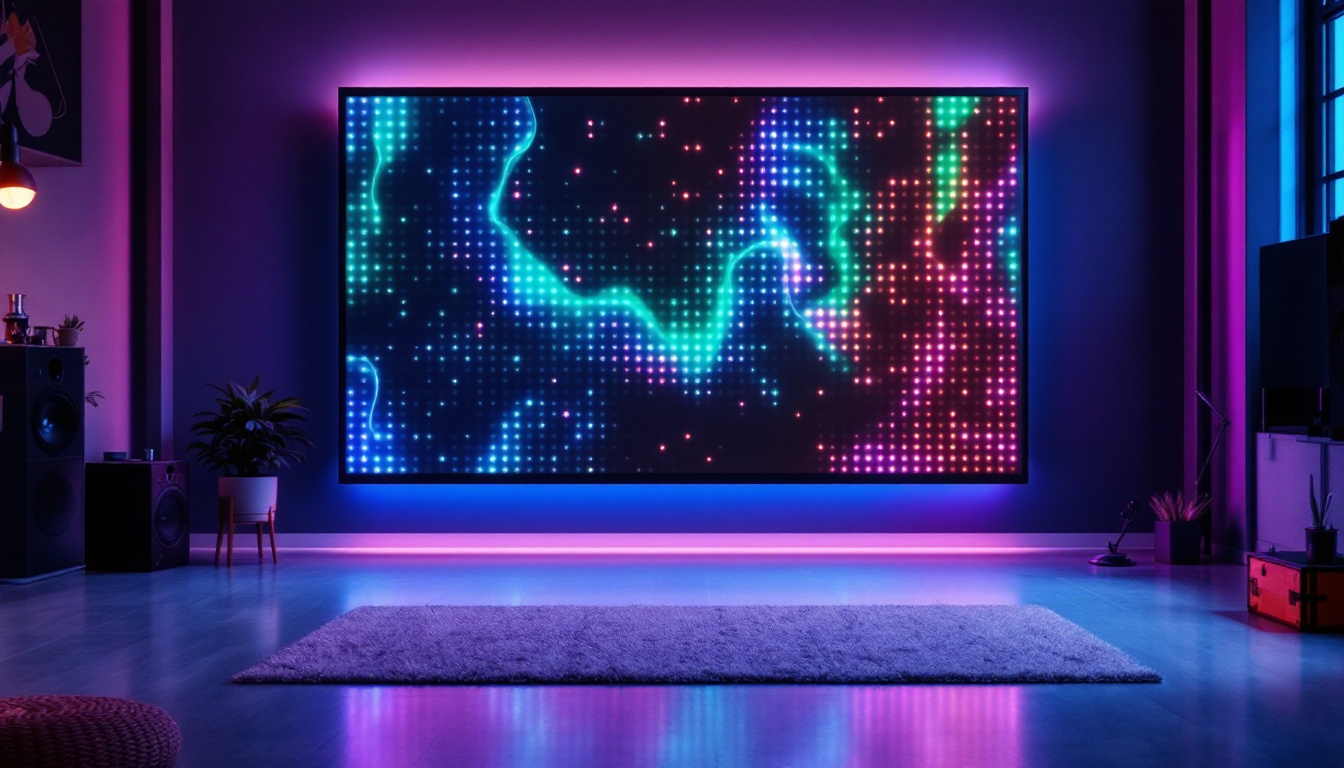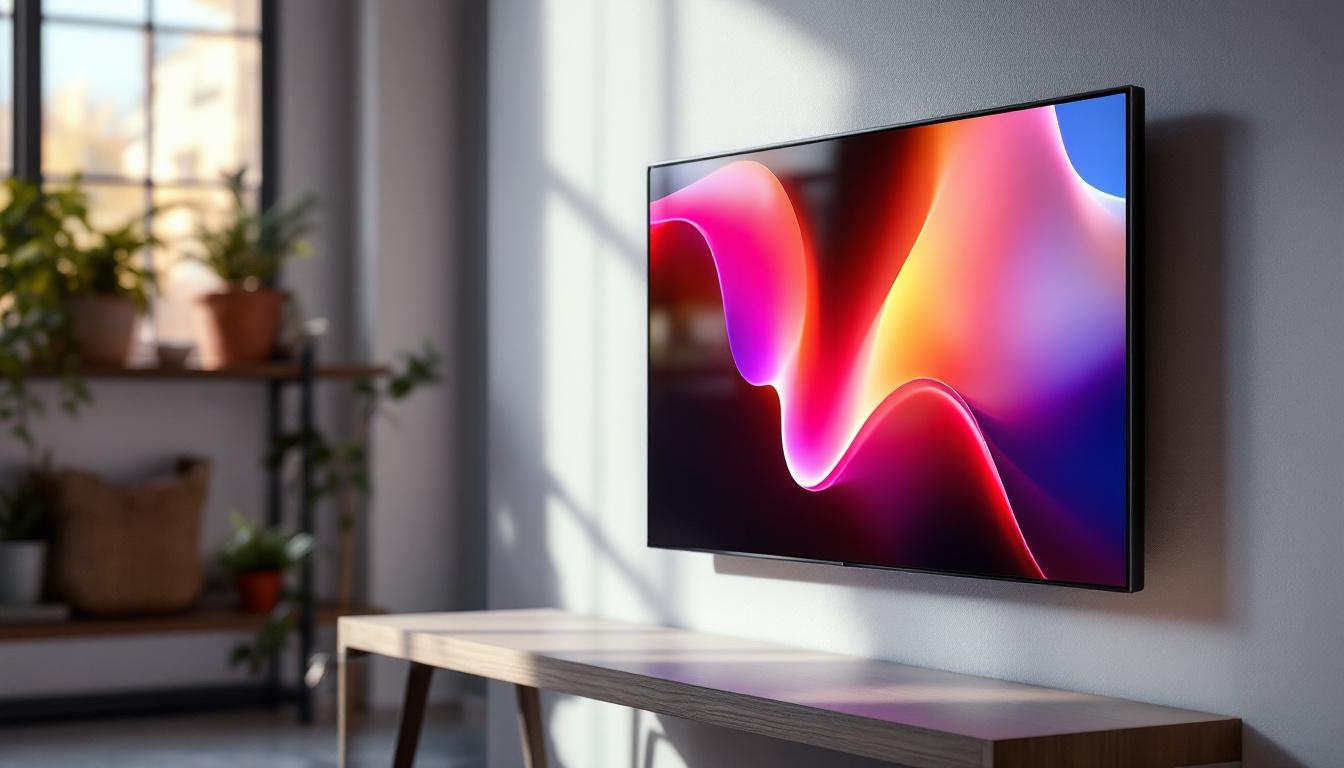In the world of display technology, the terms LCD and LED are often used interchangeably, leading to confusion among consumers. While both technologies are crucial in the realm of visual displays, they have distinct characteristics and applications. This article aims to clarify the differences between LCD and LED displays, particularly focusing on the IPS (In-Plane Switching) technology within the LED category.
Understanding LCD Technology
Liquid Crystal Display (LCD) technology has been a staple in the display market for decades. LCDs utilize liquid crystals that are manipulated to produce images. These displays require a backlight to illuminate the crystals, as they do not emit light on their own. The backlight can be provided by various means, including fluorescent tubes or LEDs. Over the years, advancements in backlighting technology, particularly the shift to LED, have significantly improved the brightness and energy efficiency of LCDs, making them more appealing for consumers and manufacturers alike.
How LCD Works
At the core of an LCD is a layer of liquid crystals sandwiched between two polarizing filters. When an electric current is applied, the crystals align in such a way that they either block or allow light to pass through. This manipulation of light creates the images seen on the screen. The quality of the display is influenced by the type of backlighting used, the resolution, and the quality of the liquid crystals themselves. Additionally, modern LCDs often incorporate technologies such as in-plane switching (IPS) or twisted nematic (TN) panels, which enhance color accuracy and response times, catering to the needs of gamers and graphic designers who require precise color reproduction and fast refresh rates.
Advantages of LCD Displays
LCD displays offer several advantages, including lower power consumption compared to older technologies like CRT (Cathode Ray Tube). They are also thinner and lighter, making them ideal for portable devices. Additionally, LCDs can display high-resolution images, making them suitable for a variety of applications, from televisions to computer monitors. The versatility of LCD technology extends to its use in various environments, from bright offices to dimly lit home theaters, where different backlighting techniques can be employed to optimize viewing experiences. Furthermore, the manufacturing process of LCDs has become more efficient, resulting in lower production costs and, consequently, more affordable prices for consumers.
Limitations of LCD Technology
Despite their advantages, LCDs have limitations. One significant drawback is their viewing angles. Traditional LCDs can suffer from color distortion and reduced brightness when viewed from off-angles. Moreover, response times can be slower compared to other technologies, leading to motion blur in fast-moving images. This has prompted the development of newer technologies such as OLED (Organic Light Emitting Diode) displays, which offer superior contrast ratios and wider viewing angles. Additionally, LCDs can struggle with deep blacks and vibrant colors, as the backlight can sometimes bleed through, affecting the overall picture quality. As a result, while LCDs remain popular, the competition from emerging display technologies continues to push the boundaries of what consumers can expect from their viewing experiences.
Exploring LED Technology
Light Emitting Diode (LED) technology is often seen as an evolution of LCD technology. While LED displays still use liquid crystals, they differ significantly in their backlighting method. Instead of using traditional fluorescent backlights, LED displays utilize an array of light-emitting diodes, which can enhance brightness and color accuracy. This advancement not only improves the visual experience but also contributes to a more sustainable approach to display technology, as LEDs consume less power and generate less heat compared to their predecessors.
Types of LED Displays
There are primarily two types of LED displays: edge-lit and full-array. Edge-lit LED displays have LEDs positioned around the edges of the screen, which can create a thinner profile. This design is particularly advantageous for wall-mounted displays and sleek televisions. In contrast, full-array LED displays have a grid of LEDs behind the entire screen, allowing for better local dimming and improved contrast ratios. This means that scenes with both bright and dark elements can be rendered more accurately, enhancing the overall viewing experience, especially in cinematic environments where shadow detail is crucial.
Benefits of LED Displays
LED displays boast several advantages over traditional LCDs. They offer better energy efficiency, enhanced brightness, and improved color accuracy. The use of LEDs allows for deeper blacks and more vibrant colors, making them particularly appealing for viewing high-definition content. Additionally, LED technology has a longer lifespan compared to traditional backlighting methods. This longevity not only reduces the frequency of replacements but also minimizes electronic waste, making LED displays a more environmentally friendly choice. Furthermore, advancements in LED technology, such as Quantum Dot and Mini-LED, are pushing the boundaries of display performance even further, providing consumers with an ever-expanding range of options for their viewing needs.
IPS Technology: A Closer Look
In-Plane Switching (IPS) is a specific type of LCD technology that enhances the performance of traditional LCDs. IPS panels are designed to overcome some of the limitations of standard LCDs, particularly in terms of viewing angles and color reproduction. This advancement has made IPS technology a preferred choice not only for consumer electronics but also in professional settings where visual accuracy is paramount.
How IPS Works
IPS technology improves upon the standard LCD by allowing liquid crystals to align horizontally rather than vertically. This alignment enables better light transmission and enhances the viewing angles. As a result, colors remain consistent and vibrant even when viewed from the side, making IPS panels ideal for collaborative environments or multi-user scenarios. Furthermore, the technology minimizes color shift, ensuring that the image quality remains intact across a wide range of angles, which is particularly beneficial in situations where multiple viewers are present, such as in design studios or during presentations.
Advantages of IPS Displays
One of the most significant advantages of IPS displays is their superior color accuracy and consistency. This makes them a favorite among graphic designers, photographers, and anyone who requires precise color representation. Additionally, IPS panels typically have faster response times than traditional LCDs, reducing motion blur in fast-moving images. The enhanced color depth and wider color gamut of IPS displays also allow for more vivid and lifelike images, making them a popular choice for high-definition video playback and gaming. Many users appreciate the immersive experience that IPS technology can provide, especially in gaming scenarios where visual fidelity can significantly impact performance and enjoyment.
Limitations of IPS Technology
Despite their many benefits, IPS displays are not without drawbacks. They can be more expensive to produce than standard LCDs, which can lead to higher retail prices. Additionally, while IPS panels offer better viewing angles, they may still not match the performance of OLED (Organic Light Emitting Diode) displays in terms of contrast and black levels. Another consideration is that IPS panels can sometimes exhibit backlight bleed, where light leaks around the edges of the screen, particularly in darker scenes, which can detract from the viewing experience. Moreover, the response times, while improved, may still lag behind those of TN (Twisted Nematic) panels in certain gaming applications, where ultra-fast refresh rates are crucial for competitive play.
Comparing LCD, LED, and IPS Displays
When evaluating display technologies, it’s essential to understand the differences and similarities between LCD, LED, and IPS. Each technology has its unique strengths and weaknesses, making them suitable for different applications.
Performance Metrics
Performance metrics such as brightness, contrast ratio, color accuracy, and response time are crucial when comparing these technologies. LED displays generally outperform traditional LCDs in brightness and color accuracy due to their advanced backlighting. IPS panels further enhance these metrics by offering better viewing angles and color consistency.
Cost Considerations
Cost is another significant factor when choosing between these display technologies. Standard LCDs are typically the most affordable option, while LED displays can vary in price depending on the type of backlighting used. IPS panels tend to be on the higher end of the price spectrum due to their superior performance and manufacturing costs.
Application Suitability
The choice of display technology often depends on the intended application. For general use, standard LCDs may suffice; however, for professional applications requiring accurate color reproduction, IPS displays are the preferred choice. LED displays are ideal for environments where brightness and energy efficiency are paramount, such as in commercial settings or outdoor displays.
Future Trends in Display Technology
The display technology landscape is continually evolving, with advancements that promise to enhance user experience further. Emerging technologies such as OLED and MicroLED are gaining traction, offering even better performance metrics than traditional LCD and LED displays.
OLED Technology
OLED displays utilize organic compounds that emit light when an electric current is applied. This technology allows for true blacks and an infinite contrast ratio, as individual pixels can be turned off completely. OLED displays are becoming increasingly popular in high-end televisions and smartphones, offering superior picture quality.
MicroLED Technology
MicroLED is another promising technology that combines the best features of LCD and OLED. MicroLED displays consist of tiny, self-emissive LEDs that can produce vibrant colors and deep blacks. This technology is still in its infancy but shows great potential for future applications in both consumer electronics and commercial displays.
Integration of AI and Smart Features
As technology advances, the integration of artificial intelligence and smart features into display technology is becoming more prevalent. Smart displays can adjust settings based on ambient light conditions, user preferences, and even content type. This integration enhances user experience and can lead to more energy-efficient displays.
Conclusion
In summary, understanding the differences between LCD, LED, and IPS technologies is crucial for making informed decisions when purchasing display devices. Each technology has its unique advantages and limitations, catering to various needs and preferences. As technology continues to evolve, consumers can expect even more innovative solutions that enhance visual experiences.
Whether it’s for professional use, gaming, or casual viewing, being aware of these differences can lead to a more satisfying and tailored experience. As the market progresses, keeping an eye on emerging technologies will be essential for anyone looking to invest in display technology.
Discover Cutting-Edge LED Displays with LumenMatrix
Ready to elevate your visual experience with the latest in LED display technology? LumenMatrix, a pioneer in innovative LED solutions, offers an extensive range of products designed to transform your space. From captivating Indoor and Outdoor LED Wall Displays to dynamic Vehicle and Sports LED Displays, our offerings are tailored to meet your unique needs. Immerse yourself in the world of high-definition visuals with our LED Poster Displays, Floor LED Displays, and the revolutionary All-in-One LED Display. Experience the future of visual communication with our Custom LED Displays and LED Transparent Displays. Don’t miss out on the opportunity to enhance your brand’s visibility and engage your audience like never before. Check out LumenMatrix LED Display Solutions today and be a part of the visual revolution.































